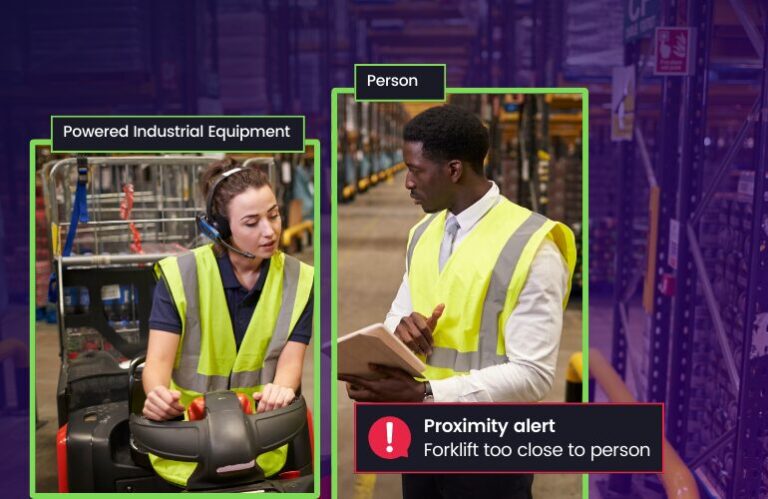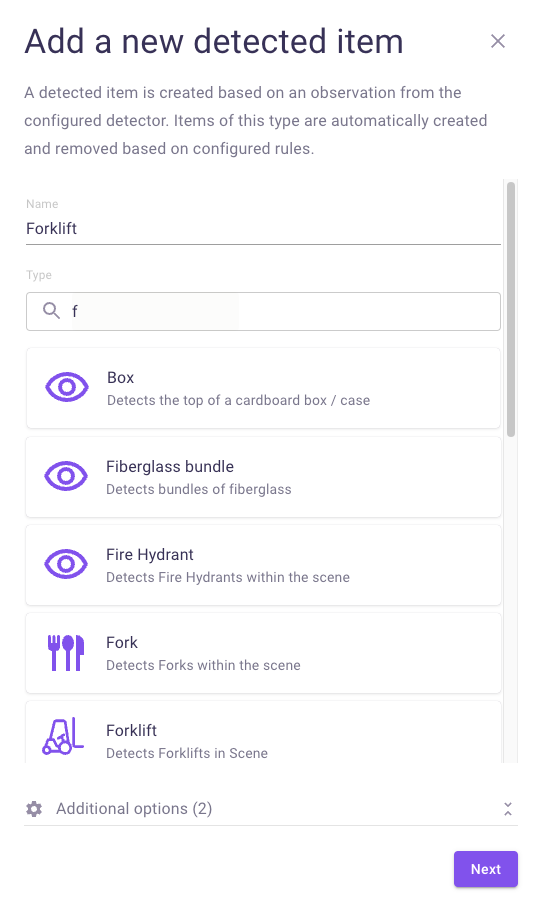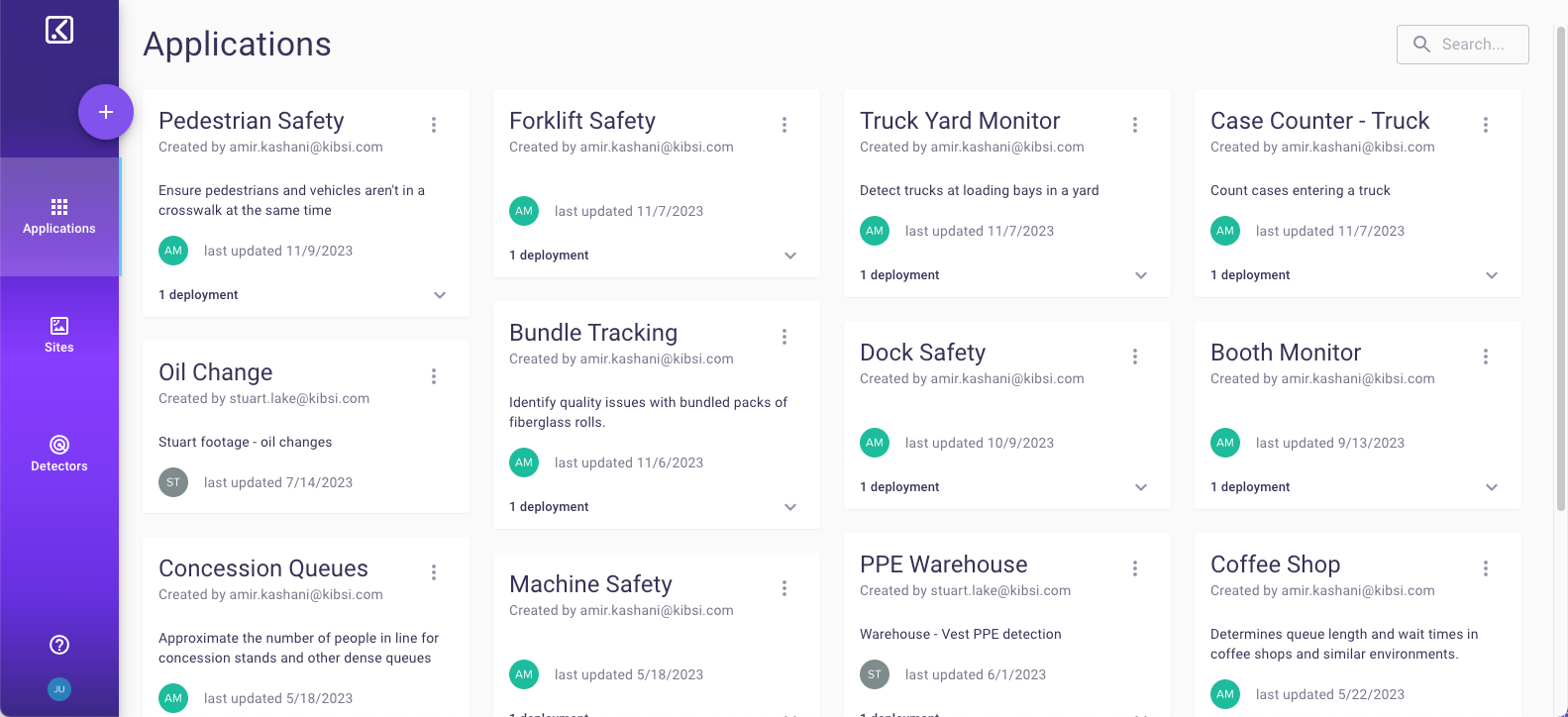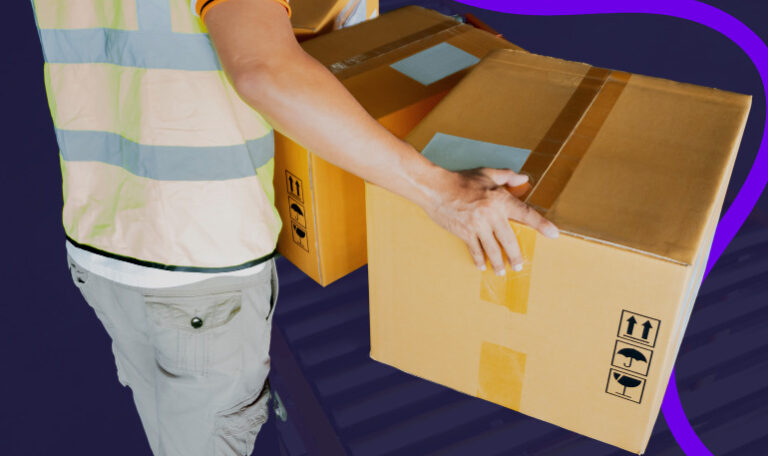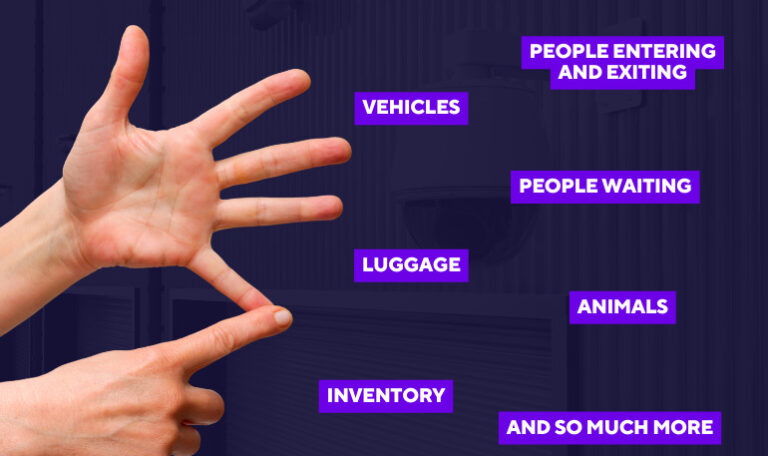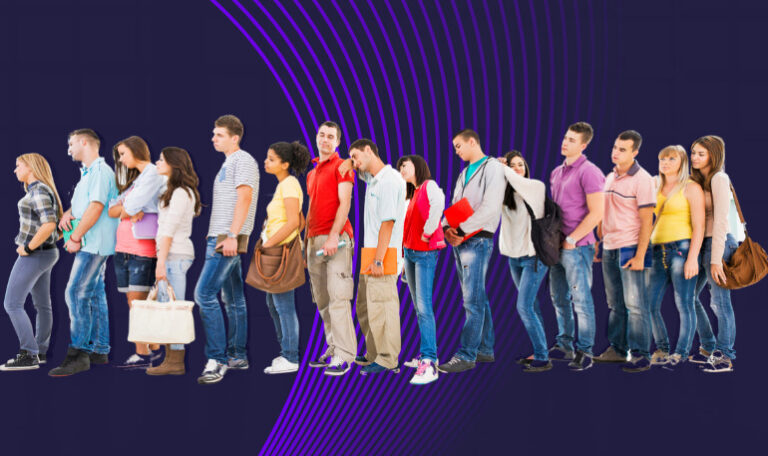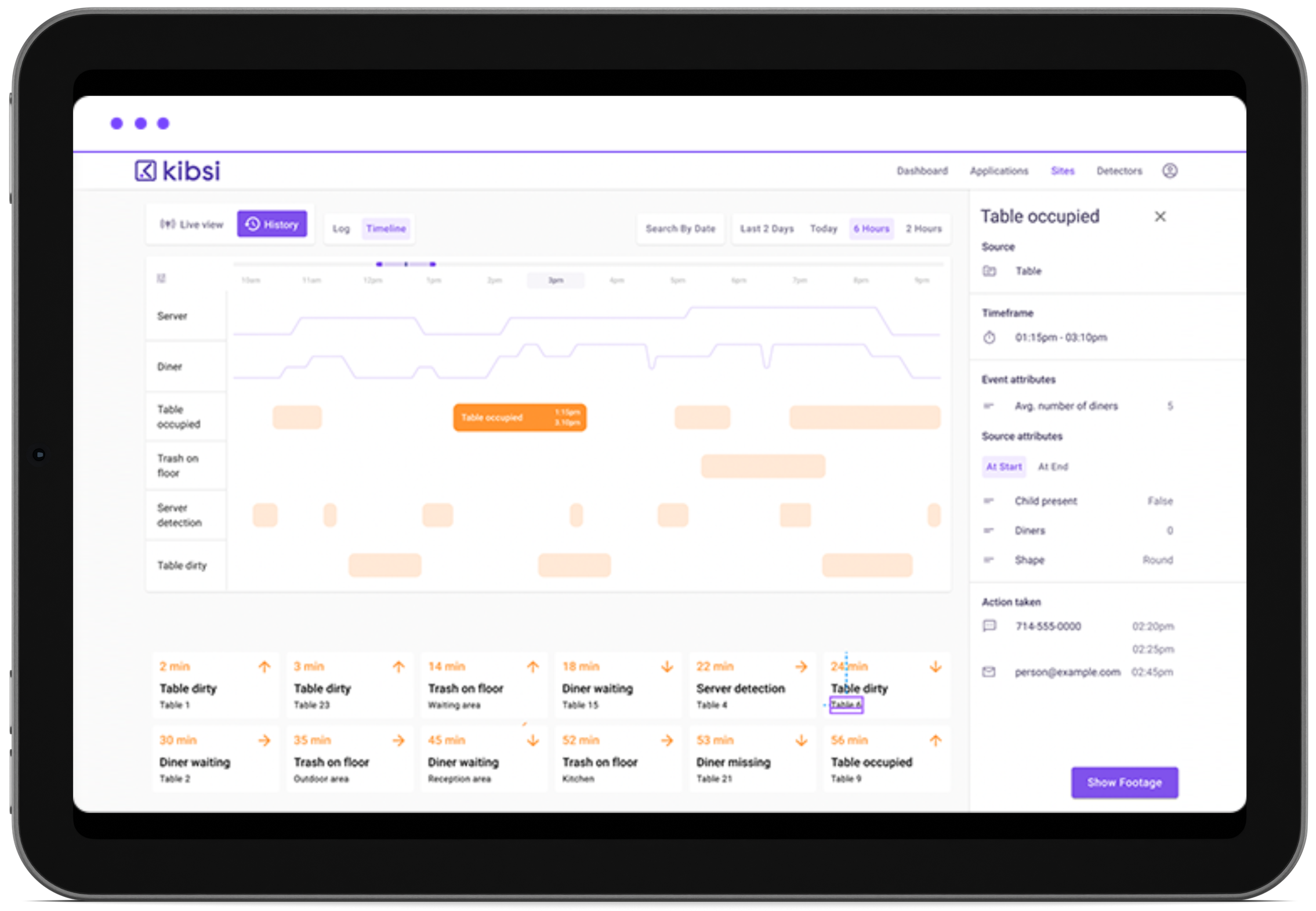1. Introduction
In the dynamic fields of Artificial Intelligence (AI) and machine learning, understanding computer vision technology is increasingly vital, particularly in sectors like distribution, logistics, and manufacturing. Kibsi stands at the forefront of this technological revolution, offering a platform that simplifies and enhances the use of computer vision. Our guide aims to clarify the distinctions between computer vision models and applications, illustrating how they operate both independently and together within Kibsi, to bring efficiency and safety to your industry.
2. Explaining Computer Vision Models
A computer vision model is akin to the intelligent core of an AI system, crafted using advanced machine learning algorithms. It is designed to identify and interpret visual data accurately. For instance, in a warehouse, a model might be trained to recognize forklifts or personnel.
Kibsi prides itself on its extensive library of pre-built models, each designed for specific object recognition tasks, ready to be deployed in diverse industrial environments. These models are the building blocks of any computer vision system, capable of identifying everything from vehicles to safety equipment within a video feed. While these pre-built models cater to a wide range of common industrial scenarios, Kibsi also understands that some use cases are unique. For these special instances, custom models can be developed. Leveraging our tools and expertise, creating these bespoke models is a straightforward process, ensuring that even the most unique operational requirements are met with precision.
3. Understanding Computer Vision Applications
Whereas models are the eyes of the system, computer vision applications in Kibsi are the brain that interprets and utilizes the visual information. Applications use one or more of these models to extract relevant data from video streams, adding a layer of context and turning this information into actionable insights.
Take, for example, a distribution center. Here, a Kibsi application could employ a forklift detection model to monitor and optimize the flow of goods, reducing idle times and enhancing efficiency. In a safety application, the same forklift model, coupled with a human detection model, could be used to ensure safe distances are maintained between machinery and personnel, significantly reducing workplace accidents.
In Kibsi, creating these applications is a user-friendly process. Users can effortlessly define the interaction between models and video feeds, ensuring that the data captured is not only accurate but also contextually rich and directly applicable to operational challenges in logistics, manufacturing, and beyond.
4. The Synergy of Models and Applications in Kibsi
In Kibsi’s ecosystem, the harmony between computer vision models and applications is pivotal. Models act as the perceptive sensors, capturing specific elements like forklifts or employees in a stream, while applications are the strategic interpreters that use this data to solve real-world problems. This synergy allows for the creation of highly effective and efficient solutions in industrial settings.
For example, a model may detect forklifts moving within a warehouse, but it’s the application that analyzes this data to optimize routes, leading to enhanced operational efficiency. Similarly, an application can use data from people and forklift detection models to assess safety protocols, like ensuring safe distances are maintained, thereby reducing workplace hazards.
5. Flexibility and Scalability with Kibsi
Kibsi’s platform is designed with both flexibility and scalability in mind. Users can easily integrate a variety of pre-built models into their applications, accommodating a wide range of use cases from standard to highly specialized. This adaptability is crucial in industries where needs can vary significantly from one operation to another.
The platform also supports the integration of custom models, catering to unique scenarios not covered by pre-built options. Kibsi’s user-friendly interface and tools make adding these models into existing applications seamless, ensuring that evolving operational needs are always met. Moreover, Kibsi applications can scale from monitoring a single camera in a small facility to managing a network of cameras across multiple sites, providing versatile solutions adaptable to any business size.
6. Building Blocks of Kibsi Applications
Kibsi applications are constructed using three key building blocks: Static Item Types, Detected Item Types, and Events.
- Static Item Types are used for constant elements within the video stream, such as specific locations or machinery. These types don’t change position and are critical for giving context to dynamic detections.
- Detected Item Types involve dynamic detections made by models. These could include moving objects like forklifts or people, identified by Kibsi’s pre-trained or custom models.
- Events in Kibsi are defined occurrences, like a forklift entering a restricted area or an employee spending too much time in a particular zone. Events use the data provided by static and detected item types to trigger specific actions or alerts, adding a layer of real-time response to the application.
These building blocks work together within Kibsi to create a comprehensive data model that not only observes but also understands and reacts to the nuances of an environment.
7. Customization and Adaptation in Kibsi
Kibsi’s platform stands out for its customization capabilities, empowering users to tailor applications to their specific needs. This flexibility is key in industries where operational demands can vary widely. Users can enhance applications by adding attributes and tracking features to both static and detected item types, thereby enriching the data model with more detailed information. For instance, attributes could include the speed of a forklift or the number of people in a designated area at a given time.
Publishing different versions of applications is another significant feature in Kibsi. This allows users to experiment with new features on a limited scale, ensuring stability and effectiveness before broader deployment. The ability to roll back to previous versions adds an extra layer of safety, enabling users to maintain continuity in their operations.
8. Practical Examples and Use Cases
Kibsi’s versatility allows it to be applied in a wide range of environments, beyond the focus industries of distribution, logistics, and manufacturing. For example:
- In retail, Kibsi can analyze customer traffic patterns, enhancing store layout and product placement strategies.
- In healthcare, monitoring patient movements or staff activities to improve care and operational efficiency.
- In public spaces, managing crowd dynamics or enhancing security measures.
These examples demonstrate Kibsi’s adaptability across various sectors, showcasing its potential to revolutionize not just industrial operations but also other domains where computer vision can add value.
9. Conclusion
Understanding the distinction between computer vision models and applications is fundamental to leveraging the full potential of AI and machine learning in any industry. Kibsi’s platform simplifies this process, offering a comprehensive suite of tools and features that allow businesses to harness the power of computer vision technology effectively. Whether it’s enhancing operational efficiency, ensuring safety, or gaining new insights, Kibsi provides a flexible, scalable solution adaptable to any environment.
Could Kibsi help you transform your business with computer vision technology? Whether you operate in logistics, manufacturing, retail, healthcare, or any other sector, our platform is equipped to meet your unique needs. Contact us to schedule a demo and see Kibsi in action. Let’s unlock the power of computer vision together and propel your business into a new era of innovation and efficiency.


